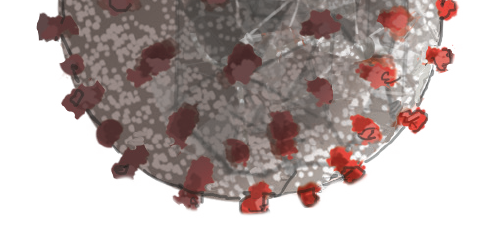
COVID-19 Topics

Answer
For this method to be effective, there must be a timely reporting of symptoms by infected people. Knowing how many people have been potentially exposed will help us determine strategies to contain the virus with resource allocation and health systems planning.
Regarding COVID-19, close contact is considered to be within 6 feet of an infected person for at least 15 minutes up to two days before the infected person starts developing symptoms, according to the Centers for Disease Control and Prevention (CDC).

professor and associate chair
Answer
Graduate students and post-graduates in biology or residents and fellows in medicine will be able to use the data analysis to gain a wider perspective of the problem, leading to advancements and economic activity in the future.

associate professor
Answer
The antibody test measures the presence of antibodies in the patient by testing blood samples. This test looks for the patient’s immune response that occurs after the coronavirus infection.

Answer
In only a few months, the coronavirus has resulted in the death of more than 374,000 people worldwide and over 100,000 Americans, compared to 100,000 American deaths by the 1968 flu over a two and a half-year period.
Therefore, in terms of the magnitude of infections, the coronavirus will be more serious than most of our previous outbreaks. One reason is the incubation period, which is 14 days compared to three to four days with the flu.

Answer
In April 2020, the CDC recommended wearing cloth face coverings in public where social distancing is difficult to maintain.
Masks, or facial coverings, are thought to slow the spread of respiratory droplets containing the virus. If a person with the virus sneezes, without a mask, the virus can travel 20 feet or more. A mask reduces the distance the virus may spread.
Further, for people not infected, masks serve as a reminder not to touch the nose or mouth, which can also slow the spread of the virus.”

Answer
Usually, herd immunity is achieved when 70% to 90% of the population is immune to the infectious agent. Antibody testing helps to estimate the percentage of immunity and provides an empirical assessment of whether herd immunity has been achieved.

Answer

associate professor
Answer
The outbreak has normalized the digital aspect of health care delivery. In the future, visits to clinics will not be the default option, as the demonstrated ease and efficiency of telehealth has reduced resistance from both clinicians and patients. There also will be an increased incorporation of artificial intelligence tools in the screening of patients and management of data.

Answer
Recent reports show that African American, Latino and Native American populations have been disproportionately impacted by the coronavirus in the U.S. This may be partially explained by existing conditions, but also factors such as the number of individuals who work essential jobs, ability to work from home, proportion of multigenerational households and basic health care access. Rural areas were slower to see infections in their communities, yet large gatherings, especially indoors, carry high risk of virus transmission no matter where they take place.